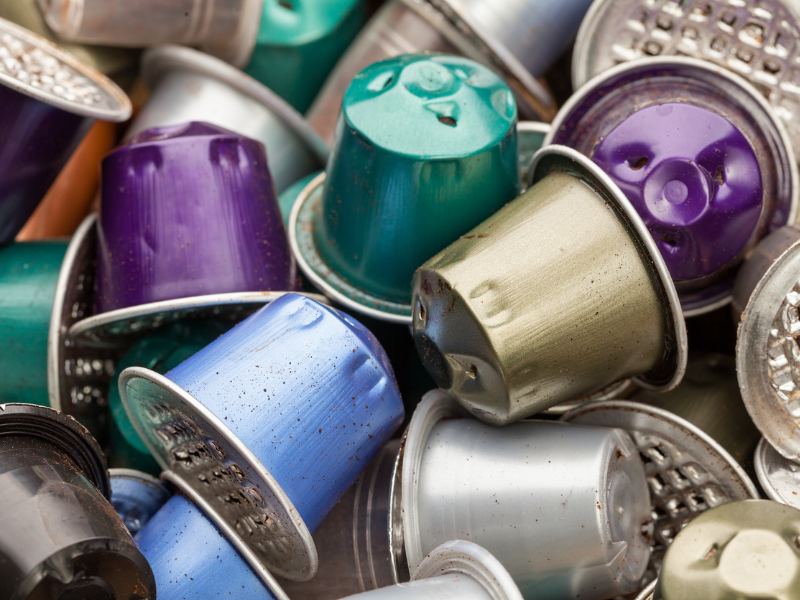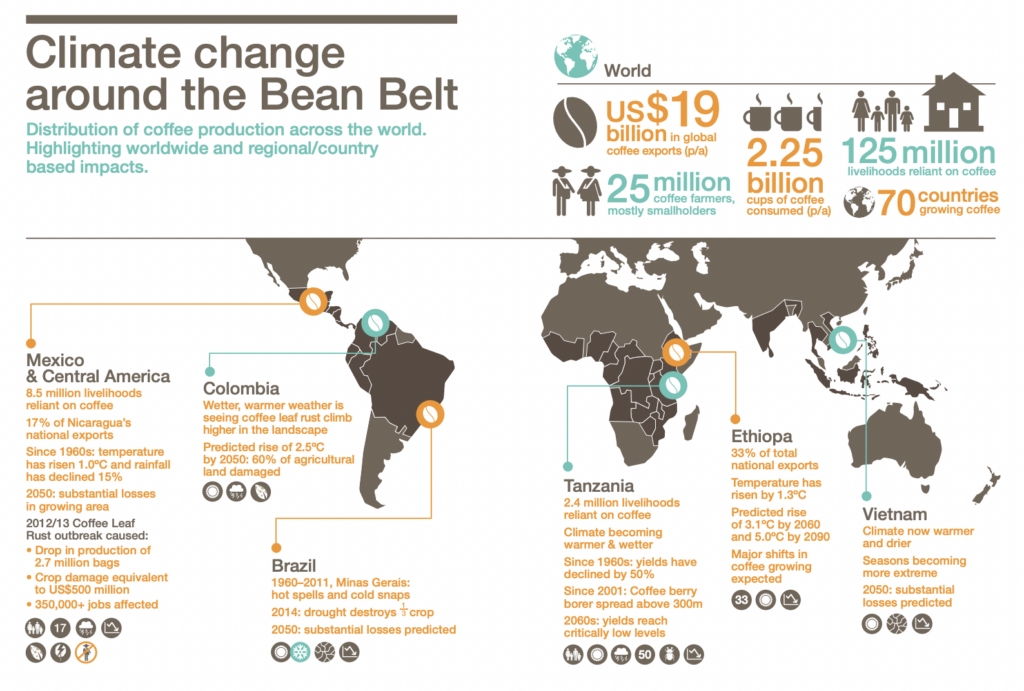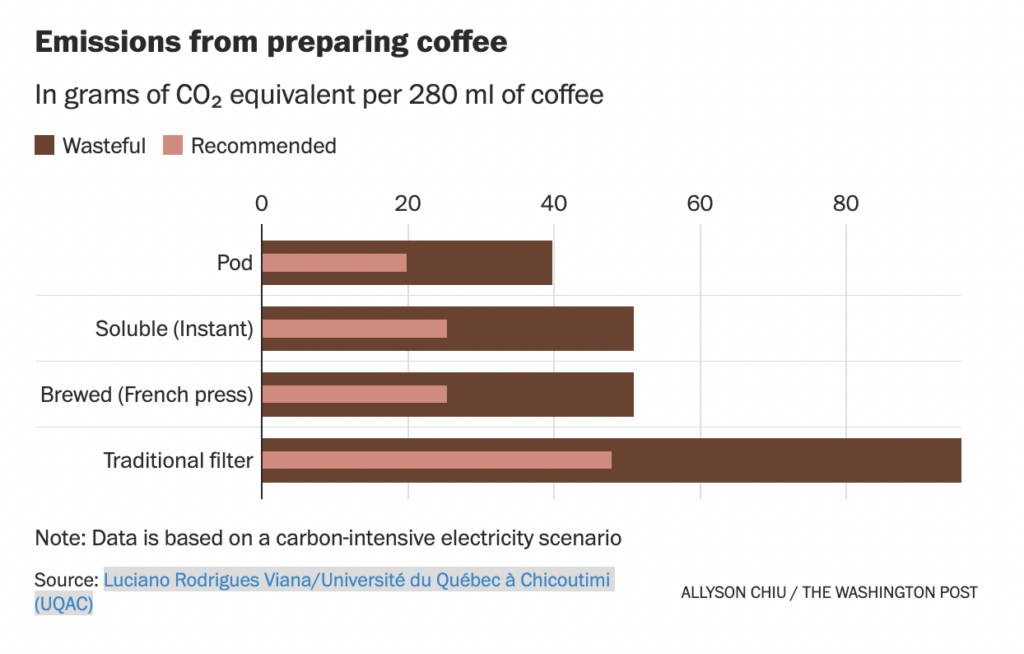Climate Solutions: How to Recycle Your Coffee Pods

Sustainability and equity in coffee are multilayered. Growing the crop is a water- and often land-intensive process, and plenty of conventional farmers use pesticides and underpay workers to create cheap coffee.
By buying that coffee, we as consumers incentivize exploitation. We may also be risking more expensive coffee in the future, as climate change is likely to dramatically reduce the amount of land suitable for coffee production.

What Can You Do To Reduce Your Coffee Footprint?
The most sustainable way you can change your java habit is to drink less coffee, period (easier said than done, we know.) The next is to buy from environmentally-friendly brands. And, though coffee-making methods have a smaller environmental impact than their production methods, they still matter. Compare their carbon footprints below.

Since coffee pod machines are designed for a single serving, they do not use extra coffee and electricity, making them the most environmentally-friendly method of coffee preparation despite their packaging.
Within coffee pods, fully compostable pods are best. If you need to use aluminum or plastic capsules, recycling them will help reduce the production of new single-use products. Keep in mind that curbside is generally the most environmentally-friendly method of recycling, followed by drop-off and finally mail-in. And don’t forget that your used grounds can be composted, put into your green bin, or added to your bokashi bucket!
Here’s how to recycle the most popular coffee pods:
Keurig K-Cups
- Peel off the foil top.
- Empty out the grounds.
- Rinse the empty pod and throw it in your recycling bin.
Nespresso Coffee Pods
Rinse out the coffee grounds and put them in your curbside recycling, or drop off or mail in pods through Nestlé’s free recycling program for individuals and businesses. Nespresso Boutiques are some of these drop-off points!
Nescafé Dolce Gusto Pods
Separate the individual components (two pieces of plastic film, coffee grounds, a foil layer, a plastic filter, and the plastic pod shell,) put the grounds in your green bin, compost, or bokashi bin, and rinse the shell. Next, place all components with #1-7 recycling symbols into your curbside bin. You may need a sharp edge for this. Alternatively, you can use Nestlé’s free Pod Recycling Program.
Tassimo T-Discs
- Remove the foil top, filter, and coffee grounds.
- Rinse off the plastic and put it in your home recycling bin.

Lavazza Coffee Pods
Eco Caps coffee capsules, compatible with Lavazza A Modo Mio machines, can be put in your green bin for breakdown in an industrial composting facility.
You can recycle Lavazza plastic and aluminum capsules via their free program in partnership with Terracycle.
Vittoria Espressotoria Capsules:
After the capsule has cooled, peel off the lid and put the ground coffee in your green bin, bokashi bucket, or compost pile. Then rinse the capsule and put it into your curbside recycling bin.
Peet’s Capsules:
Peet’s K-cup pods can be recycled in your curbside bin. Just take off the lid, dump the ground coffee, rinse, and recycle. Use the Capsule Recycling Program for other Peet’s capsules.
The following coffee pods cannot be recycled in San Diego:
- Aldi coffee pods
- Vittoria Nespresso-compatible capsules
Have other sustainability questions? Shoot us an email at compost@solanacenter.org!
